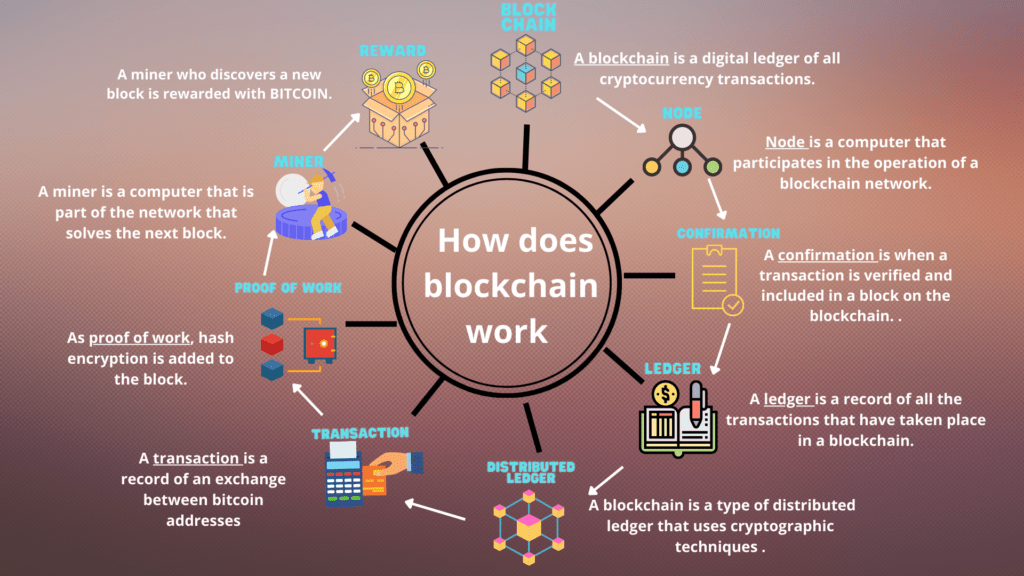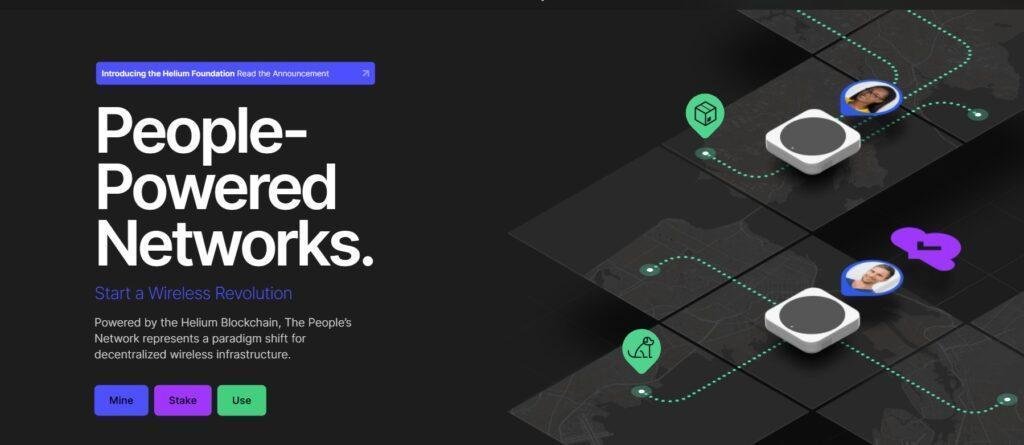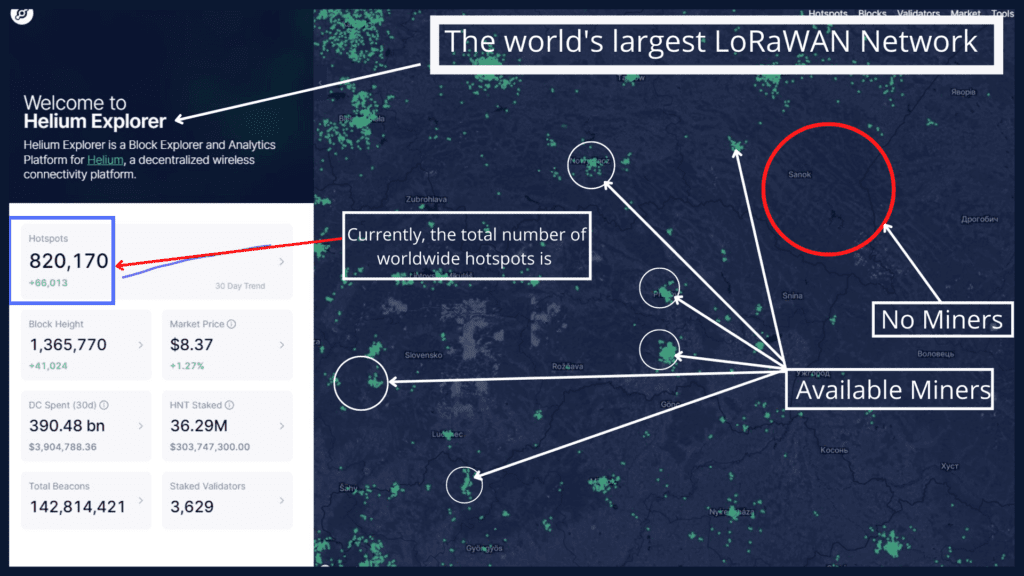Helium miner is a new kind of blockchain that is specifically designed for the mining of helium with helium hotspots. At the end of this piece, you’ll learn more about helium miner and how to pick the best frequency plan for the helium network of your helium miner. Which hotspot do you buy in your country? How to choose the helium frequency by country?
You can buy a helium miner, get it set up, and start earning HNT while you sleep.
When getting into helium mining, there are two important decisions to make: your location and your miner.
What is blockchain?
Blockchain technology is a distributed database that provides for safe, transparent, and tamper-proof data storage.
It’s the technology that powers Bitcoin and other cryptocurrencies, and it has the potential to transform a variety of sectors.

Who started mining?
In 2008, someone named Satoshi Nakamoto (or a group of people) invented the blockchain, which is a public record of all Bitcoin transactions.
It was made in that year. Since then, it has become more and more popular, and it has become more and more popular.
The creator of Bitcoin, Satoshi Nakamoto, was the first miner. He received 50 BTC for his help in running the network.
What is the Helium Mining Network and Token? (helium hotspot)
The Helium mining network is a brand-new, low-cost way to earn Helium, a cryptocurrency token (HNT).
The Helium Network is an example of a decentralized network that relies on the participation of its users.
In addition, it is a brand-new blockchain network with the goal of establishing decentralized and public wireless networks.
Proof-of-coverage (PoC) is an alternative to proof-of-work (PoW) in the sense that it is essentially a decentralized Internet of Things (IoT) that is built on the Helium blockchain. PoW is founded on the idea that a user must take some action in order to earn a reward.
The network will use the Helium Token to reward participants for their contributions. The helium mining network is expected to launch in late 2019.

Who are the Helium founders?
Amir Haleem, Shawn Fanning, and Sean Carey established Helium together in 2013.
Haleem’s background is in video game design and eSports. In the late 1990s, Fanning developed Napster, one of the earliest popular P2P internet programs that allowed users to share and download music from other users’ computers.
Before joining Helium, Carey functioned as a developer at a number of places, including “Where,” an advertising optimization startup that Payment Gateway bought.
The Helium team is made up of knowledgeable people with backgrounds in several industries, incorporating technology, radio, peer-to-peer, network components, blockchain, and distributed ledger technologies.
What Is Helium Miner?
A helium miner (commonly referred to as a “helium hotspot”) is a small router-like device that allows anyone to contribute to (and profit from) a wireless network for Internet of Things (IoT) devices.
Helium miners are peer-to-peer devices, that connect over distances short and long.
Miners of helium can transport data over hundreds of kilometers for a fraction of the cost of conventional cellular networks.
Helium (HNT) coin:
Helium (HNT) is an IoT-focused decentralized blockchain network. It has real-world uses, unlike other cryptocurrencies.
Hotspots receive HNT, the native currency of Helium, in return for supplying and certifying wireless coverage.
In July 2019, the HNT coin was released. Users that operate nodes mine and are rewarded with HNT tokens. The nodes are hotspots made up of blockchain mining equipment and a wireless entry point known as the LoRaWAN wireless protocol.
How does a helium mine work? (helium hotspot)
As was indicated before, Helium employs a straightforward strategy that is referred to as Proof of Coverage (POC). The network will award miners with HNT whenever they use radio waves to demonstrate the availability of wireless coverage.
Without the need for WiFi or cellular networks, Internet of Things devices such as smartphones can connect to Helium hotspots, thereby promoting innovation and enabling the creation of new use cases.
To mine helium, you need special equipment like
- Bobcat 300
- Cal-Chip
- ClodPi
- Kerlink
- Nebra
- SenseCAP
More importantly, a suitable location where there is no other miner within 300 meters; otherwise, you will have to share the reward.
So, download the helium hotspot app and we will just open and create a helium account protected by 12 unique words that act as a password for signing in or recovering accounts.
so, We need to connect the device to the helium app through mobile.
However, you will also require a dual-stack Internet connection (DS-Lite is insufficient) and a great deal of time and patience, as port 44158 must be forwarded.
The network is very slow, which makes it hard to set up because the app doesn’t give you the information in real-time.
It is possible to read the current status directly from the miner, but it can take up to 48 hours for it to show up online in the app after a successful setup.
How to Fix RELAYED Helium Miner Hotspot (Port Forwarding 44158)?
“Relayed” Hotspots your helium miner may have trouble connecting to the internet and often use other Hotspots nearby.
So, we will forward port 44158.
Here are the steps you need to take to forward port 44158:





What is Proof of Coverage?
The Helium blockchain uses a new algorithm called “Proof of Coverage” (PoC) to make sure that Hotspots are where they say they are.
In other words, PoC tries to make sure that Hotspots are telling the truth about where they are and how much wireless network coverage they create from that location.
What is proof of challenge?
Proof of Coverage’s single unit of work is called a “challenge.” The Helium blockchain has already issued and processed tens of millions of challenges.
With every new challenge, the blockchain keeps track of more information about how well the network works. Let’s look at how problems really come up.
What are Proof-of-Coverage Roles?
Proof-of-coverage Challenges involve three distinct roles:
- Challenger: The Validator who creates and sends out the POC Challenge.
- Beaconer : “Challengee” is another name for it. This hotspot is the target of the POC challenge, and it is its job to send (or “beacon”) challenge packets so that other hotspots close by can see them.
- Witness : Hotspots that are geographically close to the Transmitter notify the challenge packet’s existence after it has been transmitted.
What is proof-of-work? or POW?
- Proof-of-work is a system used in cryptocurrency mining.
- Miners use their computers to try to solve hard math problems, and the first person to do so is given a new cryptocurrency as a reward.
- In short, it is a method of confirming transactions on the blockchain, also called mining.
What is LoRaWAN Roaming on Helium Mining?
The Helium Network is the world’s largest LoRaWAN Network Helium Explorer and keeps growing at a speed that is hard to believe.
This makes it a highly desirable network for other public and private LoRaWAN Network Server providers (LNSes) that wish to extend their coverage without investing in their own equipment and capital.

Which hotspot do you buy in your country? Approved Hotspot Manufacturers:
| Helium Hotspot Name | Approved Manufacturer |
| Bobcat | bobcatminer.com |
| Browan/MerryIoT | MerryIoT.com |
| Cal-Chip | CalChip Connect.com |
| ClodPi | ClodPi Labs (India) Private Limited |
| COTX Networks | cotx-store.com |
| Controllino | hotspot.controllino.com |
| Dragino | dragino.com |
| Dusun | dusuniot.en.alibaba.com |
| EDATEC | eda-iot.com |
| Finestra | thefinestra.com |
| FreedomFi | freedomfi.com |
| FXTec Linxdot | linxdot.com |
| Heltec | heltec.org |
| Hummingbird | xdt.com |
| Kerlink | kerlink-miners |
| LongAP | longap.com |
| Midas | midaswireless.io |
| Nebra | uk.pi-supply.com |
| Sensecap | sensecapmx.com |
| Syncrobit | syncrob.it |
How to pick the best frequency plan for your helium miner?
Where a frequency plan is “Unknown“, it means that none of the above frequency plans have been assigned for usage by LoRaWAN by the local telecommunications or radio regulator in that nation.
People in these nations are encouraged to contact the Helium Foundation LoRaWAN Committee through the #foundation channel on the Helium Community Discord to help the LoRaWAN Alliance create a frequency plan for use in their country.
Countries’ names begin with the letter [A]
| Country | Frequency Plan |
| Afghanistan, Angola, Antigua and Barbuda, Aruba | Unknown |
| Aland Islands, Albania, Andorra, Antarctica – British, Armenia, Austria | EU868 |
| Algeria | AS923_3 |
| American Samoa | US915 |
| Anguilla, Antarctica – Chilean, Antarctica – Australian, Antarctica – Argentine, Argentina, Australia | AU915 |
| Azerbaijan | EU433 |
Countries’ names begin with the letter [B]
| Country | Frequency Plan |
| Bahamas, Bermuda | US915 |
| Bahrain, Belarus, Belgium, Benin, Bhutan, Bonaire Sint Eustatius and Saba, Bosnia and Herzegovina, Botswana, Bouvet Island, Bulgaria, Burundi | EU868 |
| Bangladesh, Brunei | AS923_1 |
| Barbados, Belize, Bolivia, Brazil, British Virgin Islands | AU915 |
| British Indian Ocean Territory, Burkina Faso | Unknown |
Countries’ names begin with the letter [C]
| Country | Frequency Plan |
| Cambodia, Costa Rica, Curaçao | AS923_1 |
| Cameroon | EU433 |
| Canada, Cayman Islands | US915 |
| Cape Verde, Comoros, Côte d’Ivoire, Croatia, Cyprus, Czech Republic | EU868 |
| Central African Republic, Chad, Congo [DRC], Congo [Republic] | Unknown |
| Chile, Christmas Island, Cocos [Keeling] Islands, Colombia, Cook Islands | AU915 |
| China | CN470 |
| Cuba | AS923_3 |
Countries’ names begin with the letter [D]
| Country | Frequency Plan |
| Denmark | EU868 |
| Djibouti | Unknown |
| Dominica, Dominican Republic | AU915 |
Countries’ names begin with the letter [E]
| Country | Frequency Plan |
| Ecuador, El Salvador | AU915 |
| Egypt, Equatorial Guinea, Estonia | EU868 |
| Eritrea, Eswatini [Swaziland], Ethiopia | Unknown |
Countries’ names begin with the letter [F]
| Country | Frequency Plan |
| Falkland Islands [Islas Malvinas], Faroe Islands, Finland, France, French Guiana, French Polynesia, French Southern Territories | EU868 |
| Fiji | Unknown |
Countries’ names begin with the letter [G]
| Country | Frequency Plan |
| Gabon, Gaza Strip, Guinea-Bissau | Unknown |
| Gambia, Ghana, Guinea | EU433 |
| Georgia, Germany, Gibraltar, Greece, Greenland, Guadeloupe, Guernsey | EU868 |
| Grenada, Guatemala | AU915 |
| Guam, Guyana | US915 |
Countries’ names begin with the letter [H]
| Country | Frequency Plan |
| Haiti | Unknown |
| Heard Island and McDonald Islands, Honduras | AU915 |
| Hong Kong | AS923_1 |
| Hungary | EU868 |
Countries’ names begin with the letter [I]
| Country | Frequency Plan |
| Iceland, Iran, Ireland, Isle of Man, Italy | EU868 |
| India | IN865 |
| Indonesia | AS923_2 |
| Iraq | Unknown |
| Israel | AS923_4 |
Countries’ names begin with the letter [J]
| Country | Frequency Plan |
| Jamaica | AU915 |
| Japan | AS923_1 |
| Jersey | EU868 |
| Jordan | IN865 |
Countries’ names begin with the letter [K]
| Country | Frequency Plan |
| Kazakhstan | EU433 |
| Kenya, Kosovo, Kuwait | EU868 |
| Kiribati, Kyrgyzstan | Unknown |
Countries’ names begin with the letter [L]
| Country | Frequency Plan |
| Laos | AS923_1 |
| Latvia, Lebanon | EU868 |
| Lesotho | EU433 |
Countries’ names begin with the letter [M]
| Country | Frequency Plan |
| Macau, Malaysia, Myanmar [Burma] | AS923_1 |
| North Macedonia, Madagascar, Malta, Martinique, Mauritania, Mayotte, Moldova, Monaco, Montenegro | EU868 |
| Malawi, Maldives, Marshall Islands, Micronesia, Mongolia, Mozambique | Unknown |
| Mali, Mauritius, Morocco | EU433 |
| Mexico | US915 |
| Montserrat | AU915 |
Countries’ names begin with the letter [N]
| Country | Frequency Plan |
| Namibia, Netherlands, Netherlands Antilles, New Caledonia, Nigeria, Norway | EU868 |
| Nauru, Nepal, North Korea | Unknown |
| New Zealand, Nicaragua, Niue, Norfolk Island | AU915 |
| Niger | IN865 |
| Northern Mariana Islands | US915 |
Countries’ names begin with the letter [O]
| Country | Frequency Plan |
| Oman | EU868 |
Countries’ names begin with the letter [P]
| Country | Frequency Plan |
| Pakistan | IN865 |
| Palau, Palestinian Territories, Pitcairn Islands | Unknown |
| Panama, Papua New Guinea, Paraguay, Peru | AU915 |
| Philippines | AS923_3 |
| Poland, Portugal | EU868 |
| Puerto Rico | US915 |
Countries’ names begin with the letter [Q]
| Country | Frequency Plan |
| Qatar | EU868 |
Countries’ names begin with the letter [R]
| Country | Frequency Plan |
| Réunion, Romania, Rwanda | EU868 |
| Russia | RU864 |
Countries’ names begin with the letter [S]
| Country | Frequency Plan |
| Sahrawi Arab Democratic Republic, Saint Helena, São Tomé and Príncipe, Sierra Leone, South Sudan, Sudan | Unknown |
| Saint Barthelemy, Saint Martin, Saint Pierre and Miquelon, Samoa, San Marino, Saudi Arabia, Senegal, Serbia, Slovakia, Slovenia, Somalia, South Africa, South Georgia and the South Sandwich Islands, Spain, Svalbard and Jan Mayen, Sweden, Switzerland, Syria | EU868 |
| Saint Kitts and Nevis, Saint Lucia, Saint Vincent and the Grenadines, Suriname | AU915 |
| Seychelles | EU433 |
| Singapore, Solomon Islands, Sri Lanka | AS923_1 |
| South Korea | KR920 |
Countries’ names begin with the letter [T]
| Country | Frequency Plan |
| Taiwan, Tanzania, Thailand | AS923_1 |
| Tajikistan, Timor-Leste, Turkmenistan, Tuvalu | Unknown |
| Togo | EU433 |
| Tokelau, Tonga, Trinidad and Tobago, Turks and Caicos Islands | AU915 |
| Tunisia, Turkey | EU868 |
Countries’ names begin with the letter [U]
| Country | Frequency Plan |
| U.S. Minor Outlying Islands, U.S. Virgin Islands, United States, Uruguay | US915 |
| Uganda | AS923-1 |
| Ukraine, United Arab Emirates, United Kingdom | EU868 |
| Uzbekistan | EU433 |
Countries’ names begin with the letter [V]
| Country | Frequency Plan |
| Vanuatu | AS923_3 |
| Vatican City (Holy See) | EU868 |
| Venezuela | AS923_1 |
| Vietnam | AS923_2 |
| Virgin Islands (UK) | AU915 |
Countries’ names begin with the letter [W]
| Country | Frequency Plan |
| Wallis and Futuna | EU868 |
| Western Sahara | Unknown |
Countries’ names begin with the letter [Y]
| Country | Frequency Plan |
| Yemen | Unknown |
Countries’ names begin with the letter [Z]
| Country | Frequency Plan |
| Zambia | EU868 |
| Zimbabwe | EU433 |
Is HNT being sold for money?
To sell your HNT tokens, first transfer them from your Helium wallet to a Binance or crypto.com wallet and then sell them for cash. During this transfer, you will almost certainly have to pay some costs.
Conclusion:
Helium is one of those technologies that has a wide range of potentially useful applications. The fact that we now have a blockchain platform that can be utilized for apps is quite exciting.
By using Helium hotspot, we all have the opportunity to cultivate our own unique network while simultaneously generating passive revenue. We hope that at the end of this piece, you have a better understanding of helium mining and how the process works.
And if you are interested in giving it a go, why not get started right now so that you can bring in some extra money while you sleep?
